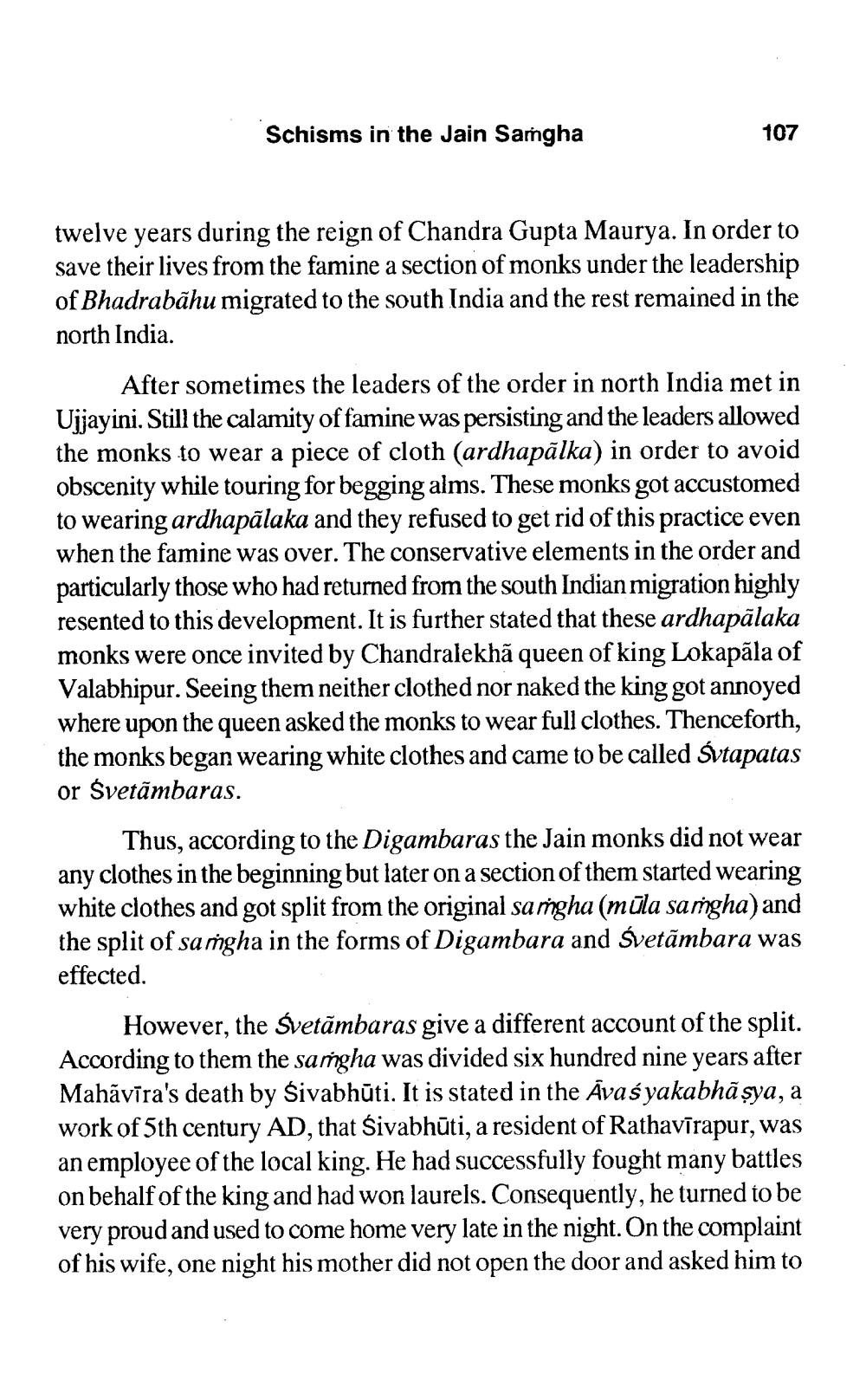________________
Schisms in the Jain Sangha
107
twelve years during the reign of Chandra Gupta Maurya. In order to save their lives from the famine a section of monks under the leadership of Bhadrabāhu migrated to the south India and the rest remained in the north India.
After sometimes the leaders of the order in north India met in Ujjayini. Still the calamity of famine was persisting and the leaders allowed the monks to wear a piece of cloth (ardhapālka) in order to avoid obscenity while touring for begging alms. These monks got accustomed to wearing ardhapālaka and they refused to get rid of this practice even when the famine was over. The conservative elements in the order and particularly those who had returned from the south Indian migration highly resented to this development. It is further stated that these ardhapālaka monks were once invited by Chandralekhã queen of king Lokapāla of Valabhipur. Seeing them neither clothed nor naked the king got annoyed where upon the queen asked the monks to wear full clothes. Thenceforth, the monks began wearing white clothes and came to be called Svtapatas or Svetõmbaras.
Thus, according to the Digambaras the Jain monks did not wear any clothes in the beginning but later on a section of them started wearing white clothes and got split from the original saṁgha(mūla samgha) and the split of samgha in the forms of Digambara and Svetõmbara was effected.
However, the Svetămbaras give a different account of the split. According to them the saṁgha was divided six hundred nine years after Mahāvīra's death by Śivabhūti. It is stated in the Avaśyakabhāşya, a work of 5th century AD, that Śivabhūti, a resident of Rathavīrapur, was an employee of the local king. He had successfully fought many battles on behalf of the king and had won laurels. Consequently, he turned to be very proud and used to come home very late in the night. On the complaint of his wife, one night his mother did not open the door and asked him to




